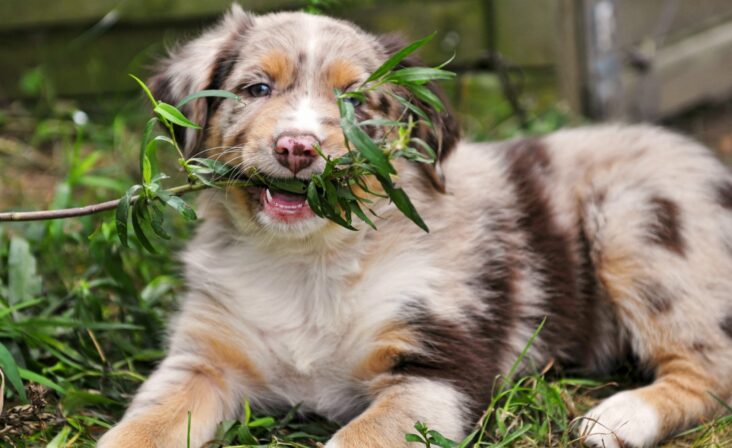Gardening with your furry friends by your side is a special kind of joy that can bring much beauty and peace to both humans and animals alike; however, not all plants are made equal. If you’re an avid gardener with pets at home, you must know which plants pose risks to their well-being.
Though many types of foliage can make beautiful additions to any garden, certain species could even prove fatal if eaten by some four-legged family members. Keep reading for a list of hazardous plants pet owners should avoid.
What can potentially be a highly toxic plant for your pets?

With a simple Google search, you may be surprised to learn that many seemingly innocent household plants can be toxic to your pets. From Lilies and Sago Palms to Aloe Vera and Devil’s Ivy, some of the most popular home plants can seriously affect dogs or cats if ingested.
Even more important than knowing which types of plants can produce toxic results if ingested is understanding the signs of poisoning in your pet which involve vomiting, diarrhea, difficulty breathing, drooling, and lethargy. If you suspect exposure to any plant-based toxins, it is highly recommended that you contact your veterinarian immediately.
By researching and familiarizing yourself with potentially dangerous plants when choosing your landscaping or home decor, you can help keep your four-legged family member safe from harm.
What can potentially be a deadly plant for your pets?
When considering your pet’s safety, it is also essential to know that some plants are more dangerous than others. These highly toxic plants can cause severe reactions, including loss of balance, seizures, and even death when ingested by an animal. Therefore, it is essential to identify and avoid these potentially lethal specimens.
At the top of this list is the Oleander plant, a flowering shrub in many parts of the world. Though beautiful and fragrant, oleander contains potent toxins that create a chain reaction in animals’ systems resulting in vomiting, irregular heartbeat, and even cardiac arrest if consumed. Additionally, Daffodils contain lycorine, which can also be fatal for dogs or cats if ingested, leading to abdominal pain, vomiting, and diarrhea.
Other poisonous plants include foxglove, azaleas, yew trees, and castor beans. Though these plants can be quite striking, they should be avoided at all costs when gardening in areas with pets nearby.
How can canines react to toxic plants?

Regarding dogs, reactions to these toxins can vary depending on the type and amount ingested. Sometimes, an animal may only experience mild stomach irritation after contact with a toxic plant such as aloe vera or begonias. However, more severe poisoning symptoms, like seizures or difficulty breathing, can occur if a pet is exposed to higher concentrations of harmful substances in certain plants.
If you have any questions about potentially hazardous plants for your furry friends, consult your veterinarian. Being aware and informed is the best way to keep your pets safe from harm when gardening.
How to make sure your garden is pet-friendly
You can take several steps to ensure that the plants in your home and garden are pet-friendly. To start, familiarize yourself with different types of vegetation inside and outside the home by reading up on their toxicity levels or researching whether “can dogs eat black pepper” or other spices can be ingested safely by pets. Additionally, opt for more organic solutions such as natural repellents like citronella candles or garlic powder instead of poisonous pesticides and weed killers that can also cause harm to animals if consumed.
Another helpful tip is to invest in raised beds and planters. It can help keep animals away from dangerous plants and prevent them from digging in soil that can be hazardous to their health. Additionally, it can be helpful to create a designated pet area with grass and wood chips instead of mulch or gravel, which can cause choking or breathing issues if inhaled by pets.
Gardening can be a great way to bring beauty and joy to your home; however, pet owners must remain mindful when selecting plant life for their gardens or landscaping. Ensuring the foliage you choose is safe for your four-legged family members can make all the difference in protecting their well-being and happiness.
What to do if your pet ingests something poisonous

If you think your pet has ingested something harmful, it’s essential to remain calm and contact a veterinarian immediately. Depending on the toxin type, vets may recommend inducing vomiting or administering specific medications to treat the poison.
In addition, always keep poisonous plants out of reach from animals, which can help prevent accidental ingestion and reduce the chances of any potential harm. Contact your local vet for advice and guidance if you need clarification on which plants are unsafe for pets.
Gardening with pets around can be an enjoyable experience when done correctly; however, knowing which plants are toxic is essential in keeping animals safe from harm. By researching plant toxicity levels before adding new vegetation in or around your home, you can ensure that your garden is a safe and calming environment for everyone – canine included.

